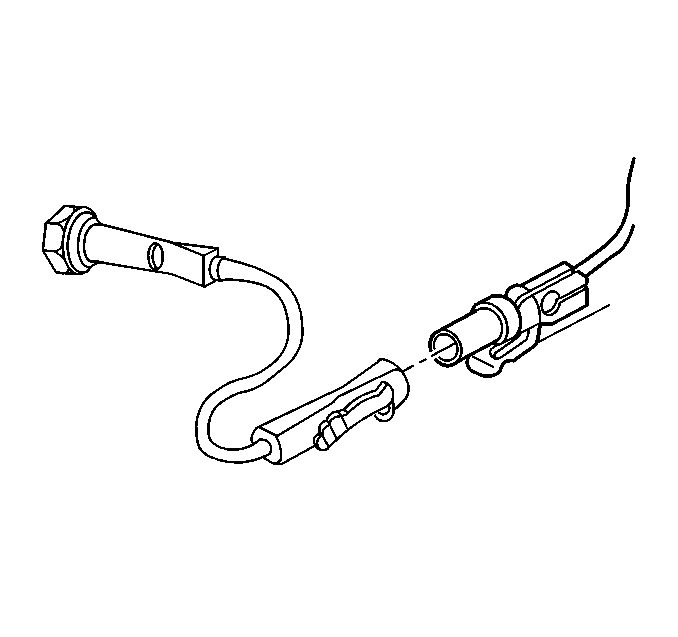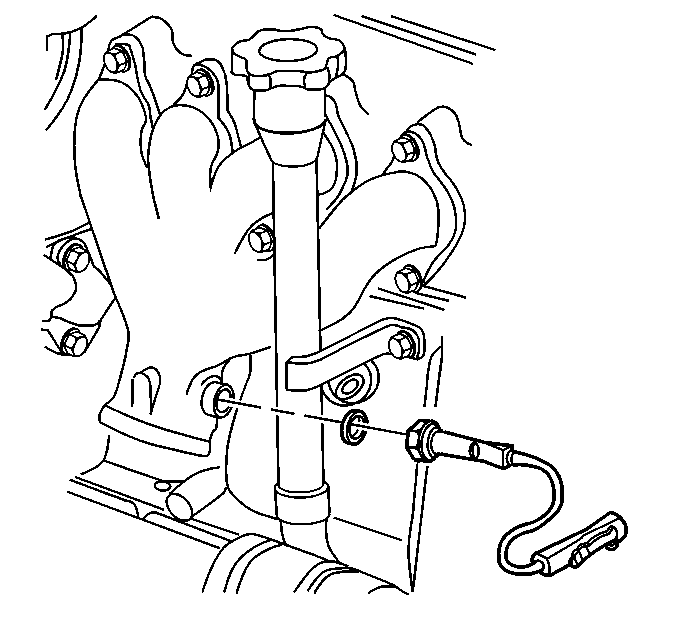Removal Procedure
Tools Required
J 29533-A oxygen sensor wrench
Notice: The Heated Oxygen Sensor (HO2S) and the Oxygen Sensor use a permanently attached pigtail and connector. Do not remove this pigtail from the Heated Oxygen Sensor. Damage or the removal of the pigtail or the connector could affect the proper operation of the sensor.
Take care when handling the HO2S and the O2S. Keep the in-line electrical connector and the louvered end free of grease, dirt, or other contaminants. Also avoid using cleaning solvents of any type. Do not drop the HO2S or the O2S. Do not roughly handle the HO2S or the O2S.When the engine temperature is below 48°C (120°F), the oxygen sensor (O2S) may be difficult to remove. Excessive force may damage the threads in the exhaust manifold or the exhaust pipe.
- Turn OFF the ignition.
- Remove the electrical connector.
- Carefully back out the oxygen sensor and seal using the J 29533-A oxygen sensor wrench.


Installation Procedure
Important: A special anti-seize compound is used on the oxygen sensor (O2S) threads. The compound consists of liquid graphite and glass beads. The graphite tends to burn away, but the glass beads remain, making the sensor easier to remove. New, or service replacement sensors already have the compound applied to the threads. If the sensor is removed from an engine and if for any reason it is to be reinstalled, the threads must have anti-seize compound applied before the reinstallation.
- Coat the threads of the oxygen sensor with the anti-seize compound if necessary.
- Install the sensor and seal.
- Install the electrical connector.

Notice: Replacement components must be the correct part number for the application. Components requiring the use of the thread locking compound, lubricants, corrosion inhibitors, or sealants are identified in the service procedure. Some replacement components may come with these coatings already applied. Do not use these coatings on components unless specified. These coatings can affect the final torque, which may affect the operation of the component. Use the correct torque specification when installing components in order to avoid damage.
Tighten
Tighten the sensor to 41 N·m (30 lb ft).

